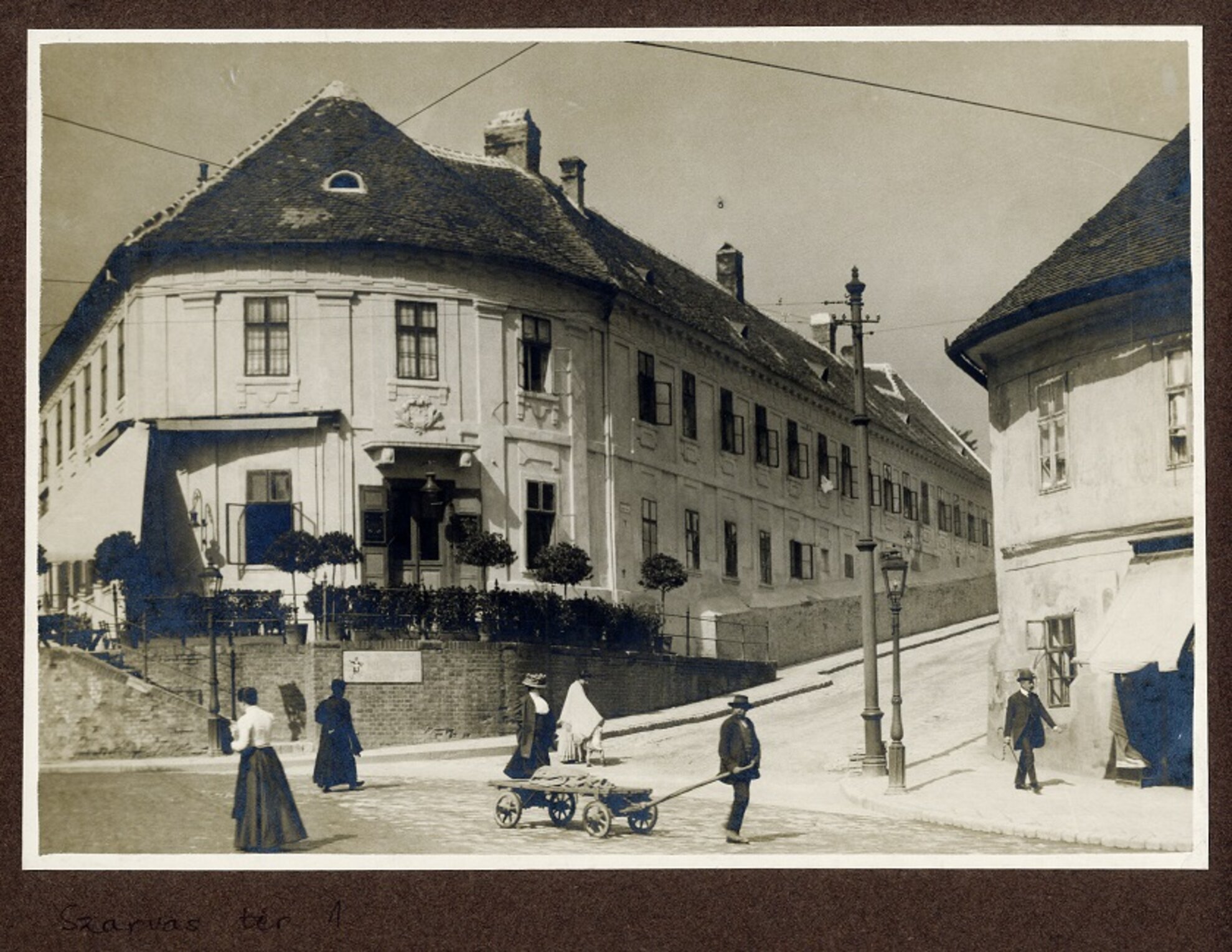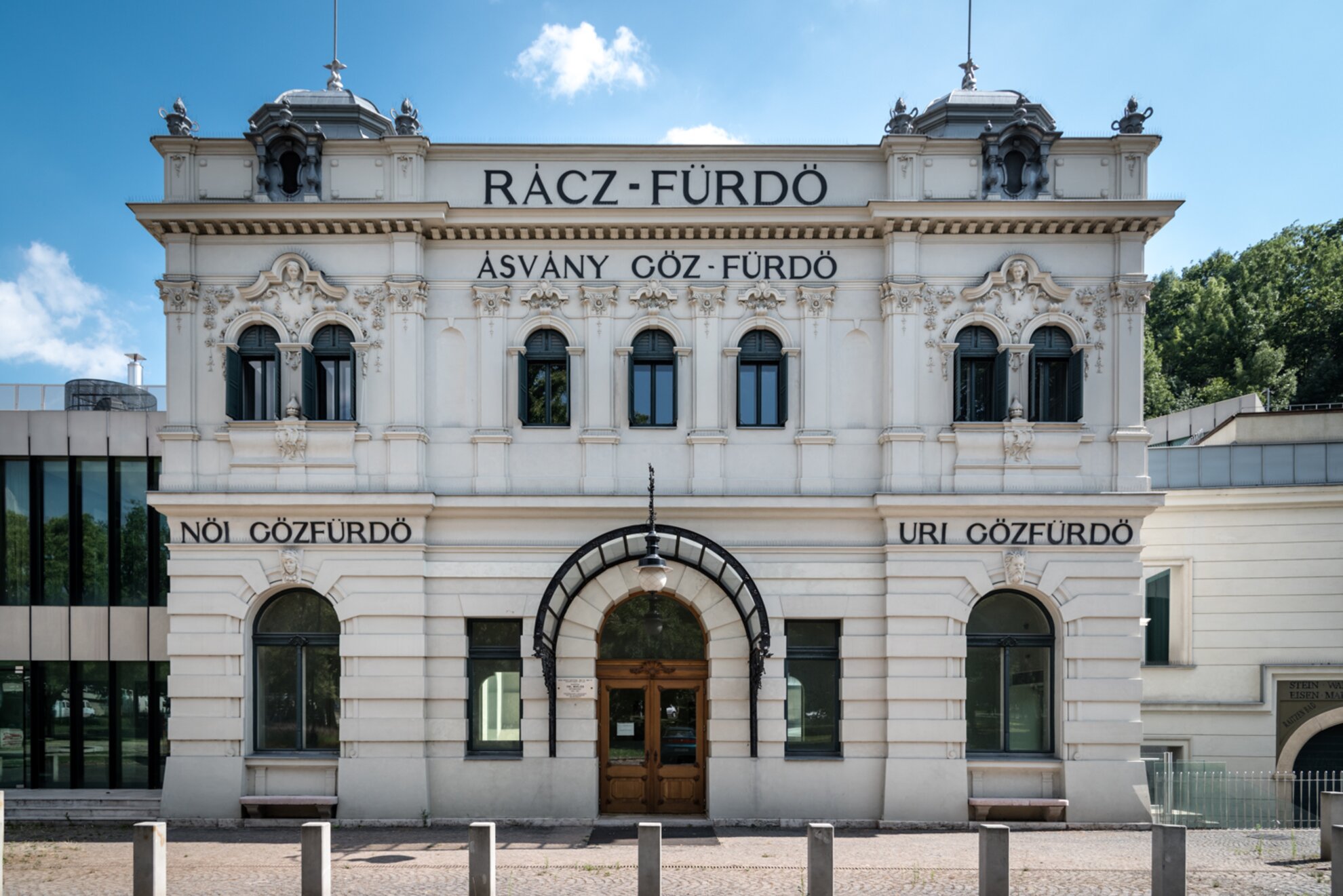In the early 20th century, when the unhealthy, unmanaged, tumbledown houses of the Tabán were destroyed, artists moved in to capture its unique, rural landscape. In paintings and photos, a small church tower clearly stands out, with a beautiful Baroque-topped tower. This was the Serbian Cathedral of Buda, which stood for nearly 200 years on Döbrentei tér and was an important symbol of the Serbian minority in the city. The current exhibition at the Budapest History Museum concerns this church, and the surrounding district of Rácváros.

At the time of the Turkish occupation, Bosnian and Serb Muslims inhabited the Tabán, with a community of Orthodox Serbs alongside. Following the expulsion of the Turks, more Slavs from the Balkan region of the Ottoman Empire arrived and populated this lower part of Castle Hill. As Serbs were once referred to as Rácok, the same name was given to the district and the Rácfürdő baths currently being rebuilt here.

After 1690, the Serbian community built a church, but frequent floods ruined it. Between 1742 and 1775, the Church of St Demeter was then constructed on the edge of Döbrentei tér, by today’s Krisztina körút, surrounded by small cabins and houses. Although the centre of the Serbian Orthodox Buda Diocese was in Szentendre, the Serbian Cathedral of Buda was of paramount importance – the bishops were installed here. Serbian communal institutions, a town hall, a school and a cemetery, were built around it.

The exhibition also highlights important figures from Serbian cultural life, such as the Zora Buda Serbian Music Association, who regularly held balls at Buda Vigadó. In the 18th and 19th centuries, then separate Buda-Pest was the cultural hub for all Serbs within the Habsburg Empire. From 1796, there was also a printing press, the Egyetemi Nyomda, the most important book publishers in the Serbian language – up until 1830, no printers were allowed in Ottoman-controlled Serbia.

The cathedral survived the mighty fire of 1810 (although its interior was set alight), the great flood of 1838 and even the demolition of the Tabán in 1933, carried out due to overcrowding and lack of public-health facilities. Surrounded by ruined houses, the church remained. Given the unique water sources here, they could have developed a spa quarter. Instead, they created a temporary park.

The exhibition shows the architectural plans for how the area would have looked had it been turned into a baths complex – and the Ottoman-era plates and coffee cups also unearthed here. In addition to the photos and paintings of the time, artefacts from the former Serbian Cathedral include its foundation stone and the plaque that marked the 1838 flood, as well as the altar paintings, sacred objects, liturgical items and iconostasis usually kept in the Serbian Orthodox Museum in Szentendre. All were saved from the church.

Much of the war-time Siege of Budapest of early 1945 took place in the nearby Castle District, and the church suffered significant damage. With neither the funds nor the political will to rebuild it, and the spa plans still in place, the church was destroyed. With it went Buda’s Serbian community, its identity wiped out.
The park remained in place until 1965, when the multi-structured Elizabeth Bridge was built.
Budapest History Museum Buda Palace, Building E, District I. Szent György tér 2 The Serbian Cathedral in the Tabán – in memory of a lost Rácváros Until 17 February 2019
Open: Tue-Fri 10am-4pm, Sat-Sun 10am-6pm
Admission: 2,400 forints/discounts 1,200 forints




